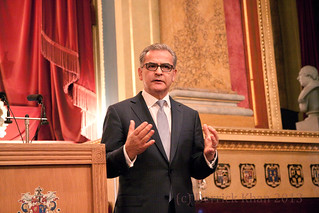How to Negotiate Your Job Offer - Prof. Deepak Malhotra (Harvard Business School) - YouTube:
must watch for both job offer and indeed negotiating deals
Tuesday 30 April 2013
Friday 26 April 2013
2013 exclusive Q1 E/MBA Club with Aram Shishmanian, the CEO of World Gold Council event [at Goldsmith hall] report, independently written by Murad Baig, EMBA06
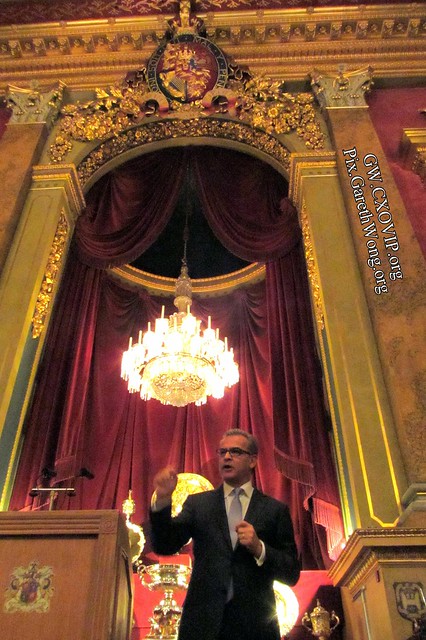 other pictures by Gareth Wong
other pictures by Gareth Wong
Venue: Goldsmith’s Hall
Foster Lane, London EC2V 6BN more pictures
Positioned at the junction of
Foster Lane and Gresham Street, north east of St. Paul's Cathedral, the
magnificent Hall, opened in 1835, is one of London's hidden treasures.
The company of Goldsmiths was
created to regulate the craft of the goldsmith and has been responsible for
ensuring the quality of Gold and Silver since 1300.
This was the venue for the 2013 Q1 EMBA event,
where many City/Cass MBA alumni {no students, thus quality of attendees are generally very senior business leaders} had gathered to listen from the leadership team about
the objectives of World Gold Council (WGC) and some of the important work done by the WGC to actively promote the gold market globally.
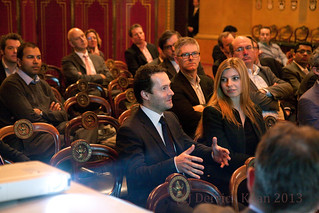
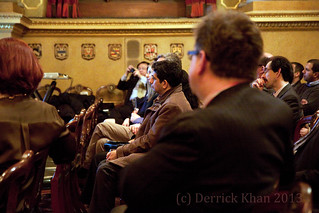 many thanks for our residence photographer Derrick Khan
many thanks for our residence photographer Derrick Khan
Introduction to WGC by AramShishmanian, the CEO of WGC
Aram did his MBA from City University
almost 38 years ago and then had an exceptional career at Accenture for almost
27 years. During his time at Accenture Aram held a number of leadership
positions including Global Managing Partner of the financial markets industry
practice.
Aram gave us a brief introduction into the
timeline of gold, a precious metal which has been used within society for more
than 4000 years and diffused into all parts of our life, from jewellery and investment, to collateral for security to being used in the creation of high specification
electronic devices.
Aram also provided market context by
highlighting some facts around the importance of gold as a precious metal:
1.
40% of the world gold
production is recycled
2.
50%, gold mined today becomes
jewellery
3.
650%, the price increase of
gold since 2002 – today
4.
Central Banks are increasingly
buying gold as it is becoming a central component of their investment
philosophy towards managing risk
Some of the main drivers which have spurred
gold’s growth over the last 10 years:
·
Central Banks are buying more
gold to bolster their gold reserves
·
Gold ETFs (exchange traded
funds) have mobilised investing in gold within financial marketssince 2005
·
Incredible growth of the Asian
markets (India & China accounted for 56% of total jewellery demand) has
resulted in higher consumption for gold
·
Scarcity of gold supply
Aram explained that although the last 10
years have shown gold to be on an upward trajectory, the events globally are
providing a strong support for the positive gold outlook to continue. Some of
the main themes driving the gold market
further are:
·
In the next 10 years there will
be a change in the gold market due to a rebalancing of economic transfer
between Asia and West
·
Breakdown of trust in financial
markets has made more investors turn to gold as a safe haven within their
investment portfolios
·
Risk management has failed and
gold has shown itself to be a good hedge due to its low correlation with other
asset classes
·
Regulation
·
Population is increasing in
India & China, countries which already account for 55% of the world gold
demand. Shanghai now has its own gold exchange
·
India & China have 50% of
their disposable income invested into gold
However set against a bullish factors for gold, are a number of challenges looming on the horizon due to:
· Differing affinities for gold jewellery between generations and a need to maintain the attraction and relevance of gold to women and to new generations of consumers
·
Women are not asking for gold
jewellery as much as before
· Competing investment products in the future as markets liberalise
· Competing investment products in the future as markets liberalise
·
Resource challenges. Gold mining
companies are struggling to raise capital for starting mining projects
·
Geological challenges with some
mines 5km deep
·
License to operate is becoming
increasingly difficult to obtain for mining companies
Aims of the WGC:
·
Stimulate demand for gold
·
Intervene to create gold demand
via new channels and new products
·
Represent most gold producing
companies
·
Promoting the sustainability of
gold production
Initiatives undertaken by WGC for stimulating
and sustaining demand for gold:
·
Gold ETFs
·
Gold based saving accounts
·
Gold is a credible collateral
under Basel-3
·
Launched new jewellery brand
·
Accreditation programmes for
Central Bankers on leveraging gold as a reserve
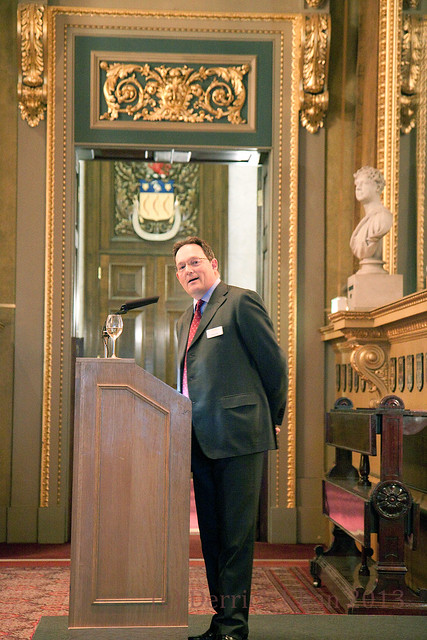
Marcus Grubb, Managing Director
Investment
Marcus Grubb’s key role is
to be the gold strategist for the World Gold Council, responsible for the
organisation’s view of all aspects of the gold market and asset allocation and to
articulate it to investors of all types, from private wealth to institutional
and sovereign wealth investors worldwide. Marcus also acts as the global
spokesperson, for the World Gold Council speaking at high profile forums and
events worldwide.
The following is a summary
of Marcus’s presentation around the main drivers which make gold an important
part of every asset managers asset allocation strategy:
·
Gold has been a top performing
asset class
·
The demand for gold is much
higher than supply. Almost 40% of the world gold is recycled
·
India & China continue to
dominate global demand, with China now a net importer of gold
·
Investment demand for gold is
strong
·
Central banks have become net
buyers of gold to hedge against currency and fx risk
·
Mine production has not
increased supply of gold
·
New discoveries of gold are
less
·
Massive debt market with
governments owning a lot of their own bonds
·
Gold is a luxury metal and a
currency with unique diversification properties from an investment perspective
·
Gold is a debasement hedge
against currency risk
·
Best tail risk hedge
·
Inflation hedge
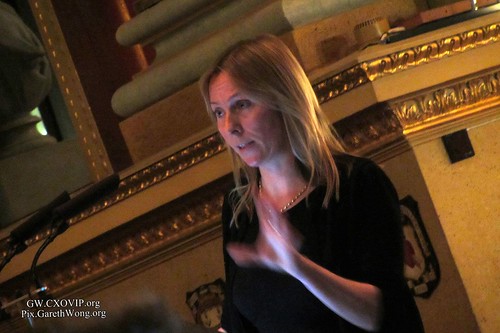
Natalie Dempster, Public Policy
Natalie explained that the main role of the
policy function was to monitor, provide policy creation expertise, lobby and
create market intelligence to support the proliferation of gold.
One of the major initiatives undertaken by
the policy function was to get the Basel-3 regulation to recognise ‘gold’ as a high
quality liquid assetdue to:
·
No credit risk
·
Transparent pricing
·
Low correlation with other
financial assets
·
Deep liquidity
Also given the current issues being faced
by European governments around the credibility of their sovereign banks, WGC
policy function is proposing to secure sovereign bonds by using gold as
collateral.
+++
Editor' note: Many thanks to Murad Baig Partner at INFINIEM, EMBA06 who took time to help us write this event report
As you can imagine and see from pictures and insights shared above, what an honour for fellow City/Cass MBA alum who managed to join us, for those of you that wanted to join a future exclusive E/MBA Club, find us on www.cassalumni.org
we are continuously looking for top of their profession guys fellow city/cass MBA alum to speak & host future E/MBA club gatherings, ping me a message directly or via my @GarethWong or my online profiles.
+++
Editor' note: Many thanks to Murad Baig Partner at INFINIEM, EMBA06 who took time to help us write this event report
As you can imagine and see from pictures and insights shared above, what an honour for fellow City/Cass MBA alum who managed to join us, for those of you that wanted to join a future exclusive E/MBA Club, find us on www.cassalumni.org
we are continuously looking for top of their profession guys fellow city/cass MBA alum to speak & host future E/MBA club gatherings, ping me a message directly or via my @GarethWong or my online profiles.
Thursday 25 April 2013
Must try this widget & scroll down! only takes minutes "Global Rich List "
Global Rich List:
Must try and share!
it could give people option to choose the best charity, but that would need another greatly designed widget to choose the best charity...
http://www.globalrichlist.com/
Must try and share!
it could give people option to choose the best charity, but that would need another greatly designed widget to choose the best charity...
http://www.globalrichlist.com/
Thursday 18 April 2013
totally agree but need a new "re-evolved" capital market structure to support his proposal!?? Clayton Christensen on "Religion and Capitalism"
Must watch thought provoking video /insights from Prof Clayton
Totally agree with him that we need ways of fixing (paraphrasing):
1) instilling value & honesty (voluntarily and instinctively practiced by the business leaders)
2) solving "principal agent theory" (not only maximising shareholder value, as 95% of market is executed by speculators) pls refer to video!
Challenge on our hand is this:
we need a new ecosystem that promote the above (as the whole value chain is now speculative)..
Surely, our challenge is that our world need to reinvent and/or augment the value chain to "de-volute" or "re-evolve" a viable alternative capital market: it maybe difficult but it will need to incentivise management/boards to focus on long term viability of companies & reward them accordingly (some might argue the bulk of the management incentive delayed by 3-6years just as Prof. Clayton mentioned shareholders held shares for 6years in 1960s)!??
Make sense!??
Subscribe to:
Posts (Atom)
